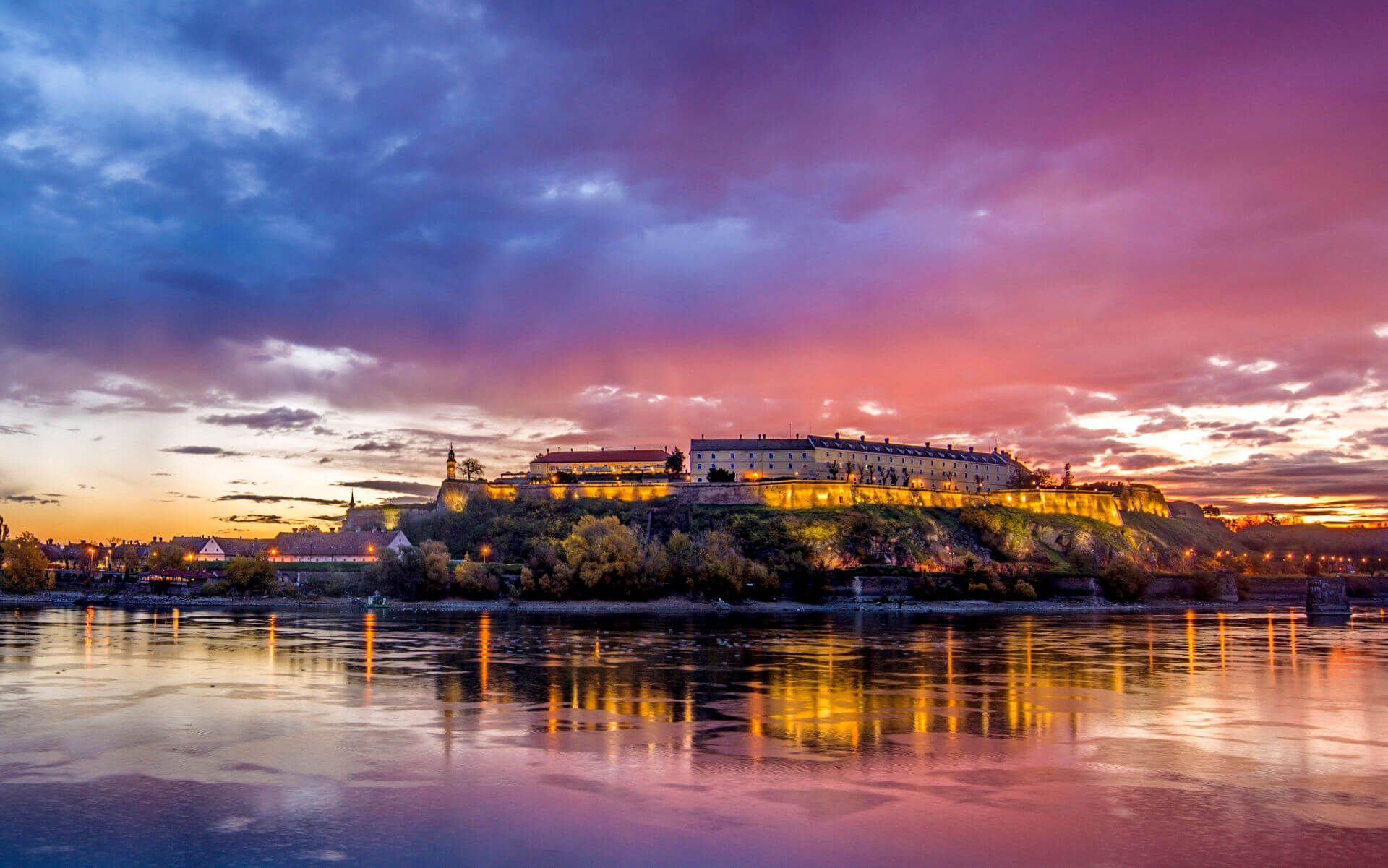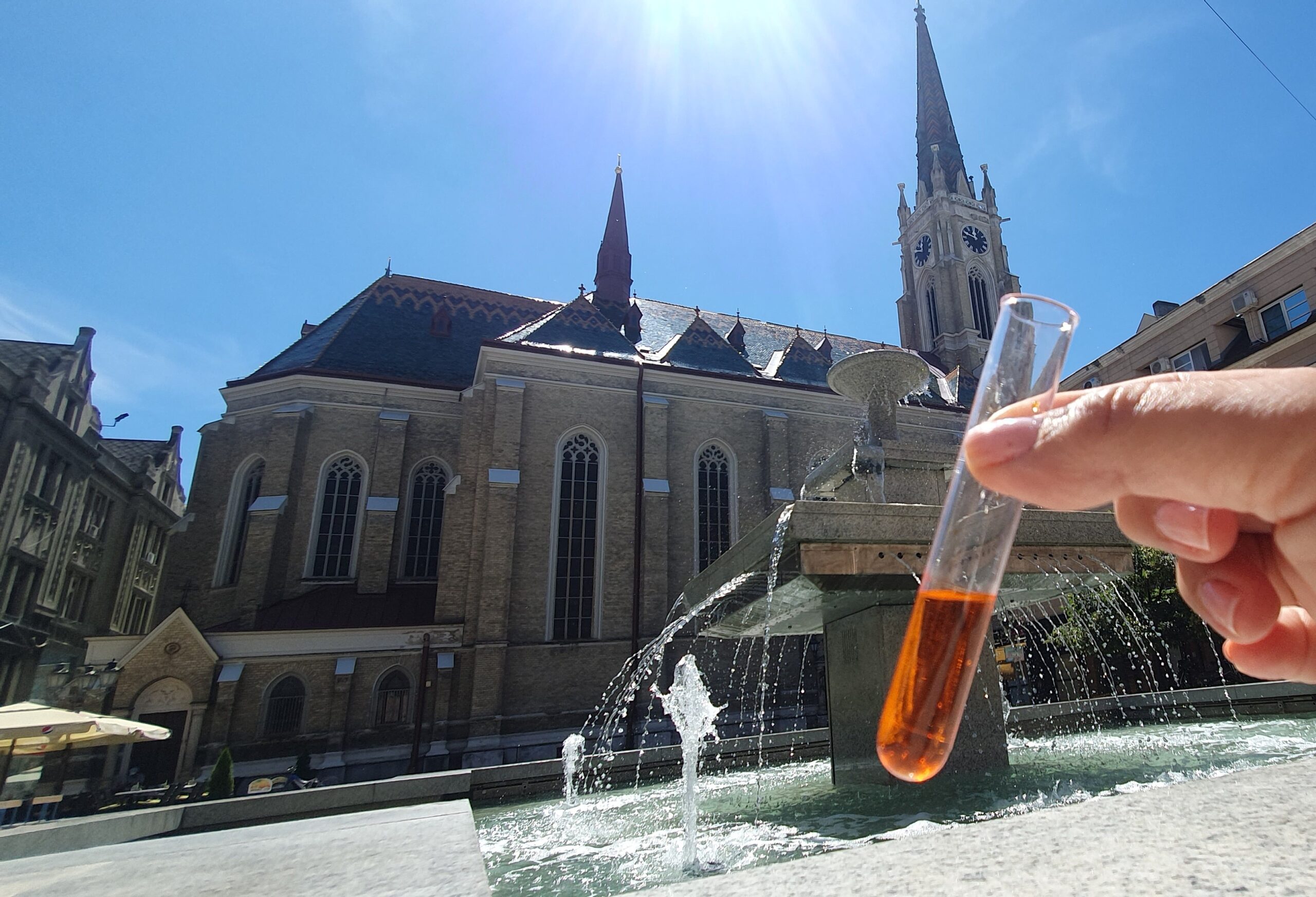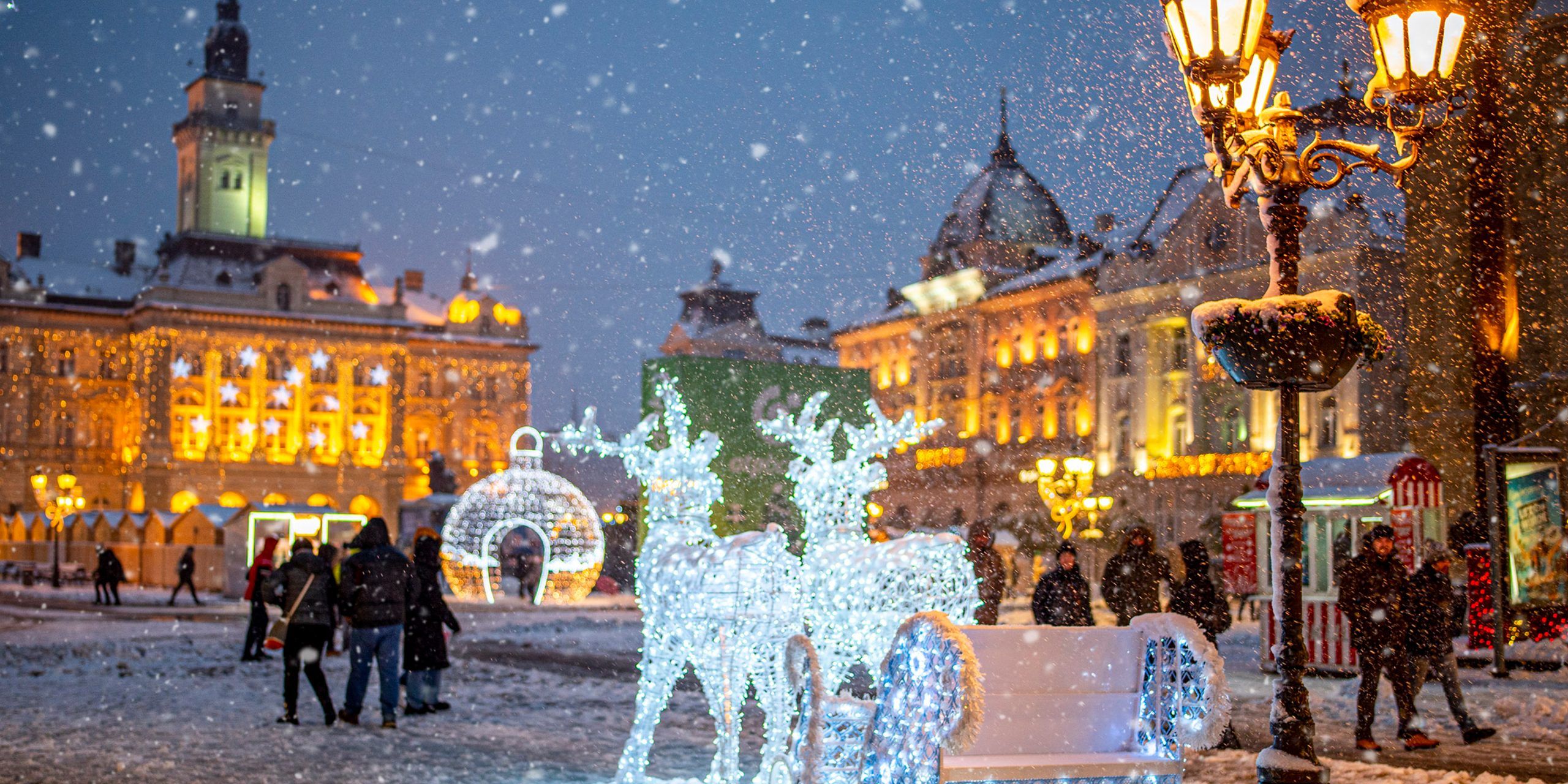About the Fortress
Petrovaradin Fortress is the most significant attraction of Novi Sad. This “Gibraltar on the Danube” is one of the best preserved fortifications in Europe and it represents an exceptional example of military architecture. The Fortress was built from 1692 to 1780; it covers the area of 112 ha, there are 10 gates, 12,000 loopholes and sites for 400 cannons. Today that is the venue of EXIT Festival, one of the most important festivals in Europe.
www.novisad.travel/en/petrovaradin-fortress/
Lower Fortress
It is a flatland part of Petrovaradin Fortress. During the 18th century it was shaped into a military-residential complex with numerous squares, buildings, convent, as well as massive gates and bastions that used to have a defence character. The lower town is arranged based on the principle of military-baroque architecture with several very important historical buildings.
The first one is a monumental complex composed on the former Jesuit convent and Roman Catholic Parish Church of St. George that was built in a baroque style. There is also the Serbian Orthodox Church of Saint Paul as well as one of the most significant structures on the Fortress – Belgrade Gate.
Upper Fortress
Clock Tower:
The Upper Town is dominated by the Clock Tower, which is interesting not only because of its appearance but also because of the fact that its large hand shows hours and the small one shows minutes. This attraction is also known by the name of “Drunken Clock“ because the clock is slow during winter and in cold weather and fast during summer and in hot weather. The clock is wound manually every day.
City Museum of Novi Sad:
We recommend that you visit the City Museum of Novi Sad at the upper Fortress plateau. In its main building – Cannon and Ammunition Storage, the visitors can see two permanent exhibitions: “Petrovaradin Fortress in the Past” and “Novi Sad from the 18th to the 20th century“. Thanks to the guiding service of the City Museum of Novi Sad, the visitors can also visit the Underground Military Galleries/ tunnels.
Underground Military Galleries:
A four-storey communication-defence system that is more than 16 km long represents a unique attraction of Petrovaradin Fortress. The construction of this complicated system was completed in 1783. A part of a network of corridors, premises of various purposes, battle lines with loopholes and mine systems in the length of around 1 km is open for visitors with professional guiding of the guiding service of the City Museum of Novi Sad. Mine fields are another curiosity of this complex system – after Antwerp it was the largest mine system in the world at that time. The tickets can be bought at the City Museum of Novi Sad.
Atelier 61:
Atelier 61 was established in 1961 as a workshop for manufacture of large size artistic tapestries and it is among unique and rare similar institutions in the world. The role and the main objective of “Atelier 61“ is the preservation of tradition of manufacture of products made of fabrics.
Fine Arts Circle:
More than one hundred artists gathered in single association live and work at the Fortress, in particular along the Empress Maria Theresa’s Bastion. The association of artists from Petrovaradin Fortress called the “Likovni krug“ (“Fine Arts Circle“) gathers artists whose art studios are open for visitors. That is informally the largest permanent art colony in the world open throughout the year.
“EXIT” festival
EXIT Festival is held at Petrovaradin Fortress every year in July. The Festival gathers the biggest stars of the world
music scene. EXIT is a multiple award-winning music festival that officially holds the title of the best European Festival since 2018.
Restaurants:
During tours around the Fortress the visitors can visit and enjoy in a rich offer of numerous cafés and restaurants. Most of these catering facilities are located in the vicinity of the Officers’ Pavilion and exclusive space of the Fortress »terrace« that provides a unique view of the river Danube and Novi Sad.
Novi Sad Tourism Organisation





